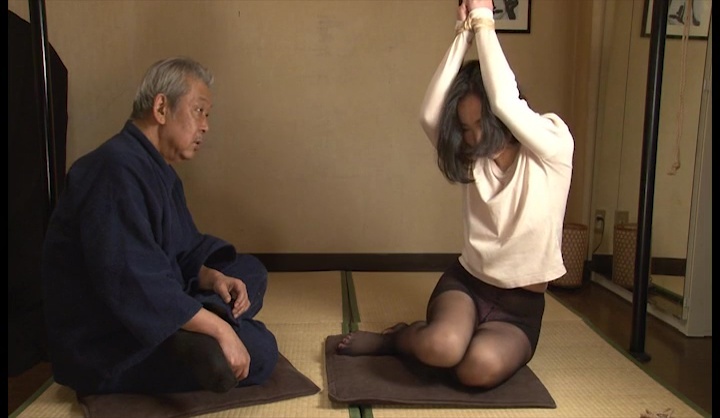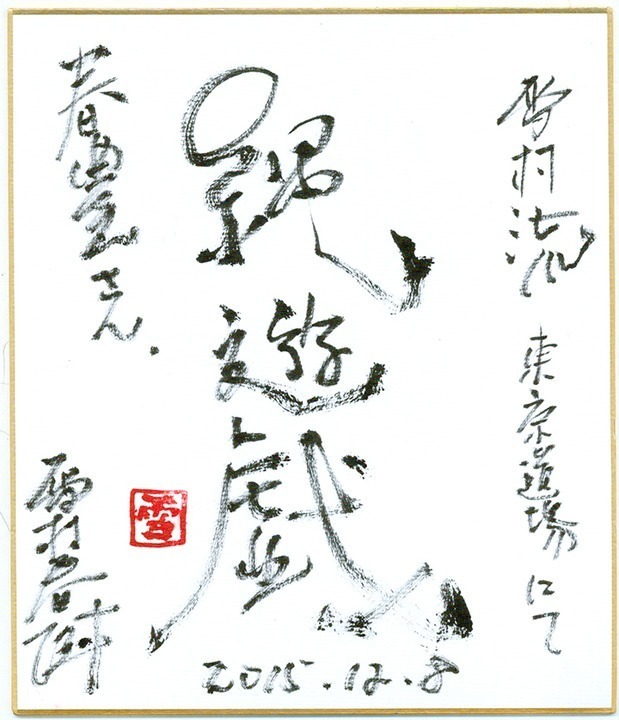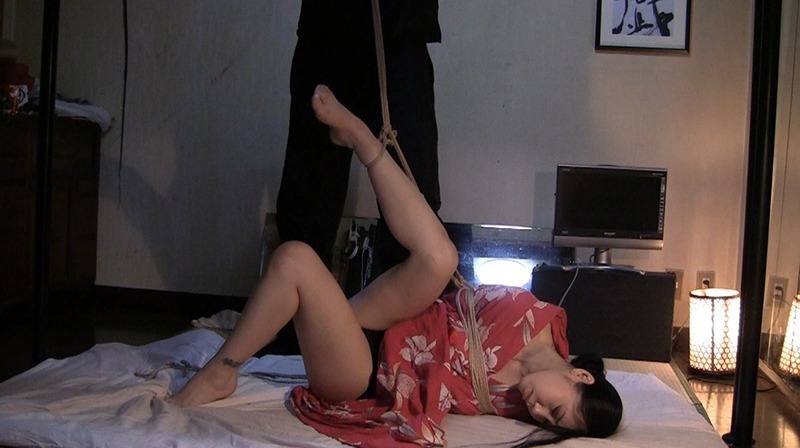Yukimura Haruki (1948-2016) was one a handful of bakushi (rope masters) who elevated the art of tying by creating his own style (ryuu in Japanese) that focused on eroticism and using rope for communication.
Like Minoruma Kou, who was his early teacher and influence, Yukimura sensei was very much of a rope minimalist, avoiding ties that were overly complicated or which relied on excessive amounts of rope.
I had the honor of studying with Yukimura sensei for six years, first meeting him in 2010, hosting him in Los Anegles in 2012, becoming a member of his school (given the name Haru Yutaka) and receiving my teaching license in 2013. I visited him regularly and studied with him in Tokyo until his death in 2016.
I believe that Yukimura taught each of his students differently, depending on who they were and how the approached rope. So my thoughts and reflections about Yukimura’s style are decidedly my own and may vary from other students’ interpretations and experiences.
Early on, one of the things Yukimura sensei told me was that it was important to learn the basics and master the fundamentals of his style and then to “make it your own.” In that sense, Yukimura Ryuu is not a set of ties, patterns, or kata. It is a way of thinking about rope, grounded is a word that he used frequently, communication.
That communication is not just what you share and impart with your rope, it is also an act of listening, of understanding what your partner is communicating with their movement, sounds, expressions, and body. Rope is not something you do to someone; it is something you do with someone.
The purpose of tying, for Yukimura, was to awaken and play with his parter’s eros, the sensual, and often playful element that makes rope bondage its erotic nature. Through fantasy and arousal, Yukimura would use rope to allow his partners to express parts of themselves that were often forced to remain hidden or repressed in everyday life.
That notion of freeing what was hidden or repressed contributes to a particular feeling that is another core element of Yukimura style rope play, hazukashii. The term hazukashii can loosely be translated as embarrassment, but it also connotes a sense of shyness, exposure, and vulnerability. That sense of embarrassment is then tied to those feelings of exposure, vulnerability, and, especially, arousal, creating a sense of erotic helplessness or surrender.
Though his ties could be simple, the psychology behind them was always complex. His focus on using rope for communication made every tying session into a conversation and every tie an exploration of feeling, emotion, and intention.
One of the key elements of this style’s technique is the use of the nawajiri, the end of the rope (literallly the ass end of the rope), which is used to convey feeling and emotion, as well as to help guide and position your partner to allow them to be tied in different ways, to be posed, or even to create and communicate additional feelings during a tying session.
It is the primary conduit we use in Yukimura style to communicate with our partner.
While many other styles focus on precision tying, carefully placed rope, and clean and deliberate ties, Yukimura’s style was much more concerned with how rope felt, rather than how it looked. The goal is always a psychological one, set by intention, fantasy, and eroticism.
In addition to being a bakushi, Yukimura was also a calligrapher of some renown. His rope style was not unlike his shodo.
As a result, his ties could have a look to them that would resemble something close to the Sōsho style of calligraphy, which focused on aesthetic beauty, rather than legibility. Where more basic styles such as Kaisho (square style) and Gyōsho (semi-cursive style), are much more clear and recognizable as kanji, Sōsho is fluid and often difficult to read, especially for those less familiar with kanji.
Like his shibari, Yukimura’s shodo was about beauty and flow, communicating its meaning through a fluid style and sense of movement that conveys personality, feeling, and emotion more than precision or clarity.
One of his personal gifts to me was a piece of shodo, which reads “Nawa Yuge” (縄遊戯) or “Rope Game” after a long discussion of what “rope games” are and what they meant to his style of rope.
For Yukimura, rope was a game of finding his partner’s eros, what it was that aroused them and made them excited. The game was to find it, engage it, and play with it, to get your partner worked up into a state of sexual excitement, desire, or even frenzy.
Doing so was what it meant to “win the game” and failure to do so was losing the game.
Rope games get easier to play with partners you are close to or intimate with, so for Yukimura one of the greatest challenges and the highest level of rope games was to tie with a new partner, using rope to discover things about them through the process of tying them. Tying someone new presents an opportunity to learn about them and to awaken their eros in new and exciting ways.
That was where Yukimura was truly expert, finding and releasing his partner’s eros.
What constitutes eros and how it manifests and is expressed is as unique as the individual being tied and can be constantly changing and evolving.
Studying Yukimura style rope is more than just learning ties, techniques, and patterns; it is about learning how to tie a person and how to create feelings and emotions that can curate an experience for them.
While the ties can be simple and the techniques are easy to learn, the deeper elements of the style, how to use those techniques to awake and play with your partner’s eros, can take a lifetime to master.






